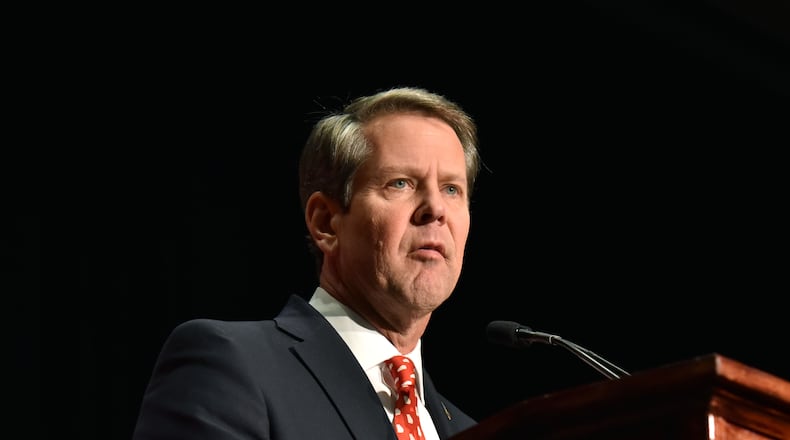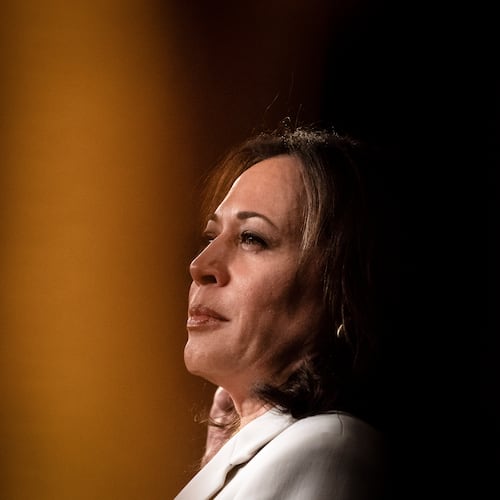A familiar scene played out at every one of Brian Kemp's rural bus tour stops, and one that epitomized his closing campaign strategy in the race for Georgia governor.
Shortly after gathering the crowd around him, the Republican would joke about how his opponent, Democrat Stacey Abrams, misspoke the name of a Georgia county.
And then he’d lace into her over a gaffe she made in Statesboro that “people shouldn’t have to go into agriculture or hospitality in Georgia to make a living.”
Neither of those episodes got national attention or even widespread local coverage. But they put into sharp focus Kemp's playbook: Win huge margins in Georgia's agricultural heartland to withstand a wave of Democratic energy.
It was the same strategy that Donald Trump used to carry Georgia by 5 percentage points despite losing the Atlanta suburbs, and it helped fuel what appears to be a tighter Kemp victory in Tuesday’s election.
Clinging to a narrow advantage, Kemp's campaign declared victory Wednesday as Abrams held out hope for a runoff.
Kemp treated Abrams’ missteps as an epic gift, bombarding likely and fringe voters with social media and TV messaging reminding them of her words – never mind that she immediately walked them back.
They played well in the pro-Trump bastions in rural Georgia, where he drew big crowds as he relentlessly assailed his opponent as a “radical extremist.” In many of these counties, he actually outperformed Trump.
Consider Banks County, a sparsely populated area where nearly 9 out of every 10 residents voted for Trump. Kemp actually exceeded Trump's percentage in that county by a skinny percentage point. He also outdid the president's margins in many other counties, from Towns to Toombs.
That highlights another force that helped give Kemp the advantage over Abrams.
While she aimed to capture left-leaning minorities who often skip midterms, he also tried to transform the electorate by pursuing a different bloc of voters.
His aides quietly set out to engage a universe of conservatives who once regularly ignored midterms but could be enticed to vote because of Kemp’s support for the president.
This effort started more than a year ago, shortly after Kemp entered the race with a Trump-like mantra, and intensified as Republican voter enthusiasm soared over anger about the treatment of Supreme Court Justice Brett Kavanaugh.
A “stealth” team of Kemp supporters knocked on more than 120,000 doors in deep-red counties – avoiding households in metro Atlanta – specifically geared toward turning out Trump voters.
They had backup. Throughout the race, the White House that was ostensibly focusing on U.S. Senate contests devoted an enormous amount of attention on the state’s governor’s race.
Vice President Mike Pence held a trio of campaign stops through the state, and other surrogates, including Donald Trump Jr. and Agriculture Secretary Sonny Perdue, barnstormed around the state.
The crescendo came on Sunday in Macon, where Trump drew thousands of Republican voters to a cramped airplane hangar and implored them to back his candidacy.
With Trump’s approval ratings on a slight uptick in Georgia, Kemp bet the turnout boost he’d get outweighed any damage it could do among moderates who resent the president.
He got what he wanted.
Trump told the crowd that a vote for Kemp was a vote for him. And Kemp predicted those voters would help construct a “beautiful red wall” to fortify him against Democratic tides.
Related stories:
About the Author
The Latest
Featured




